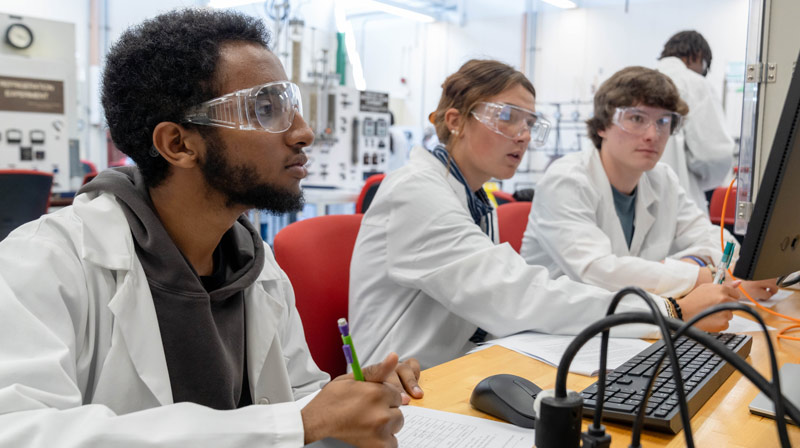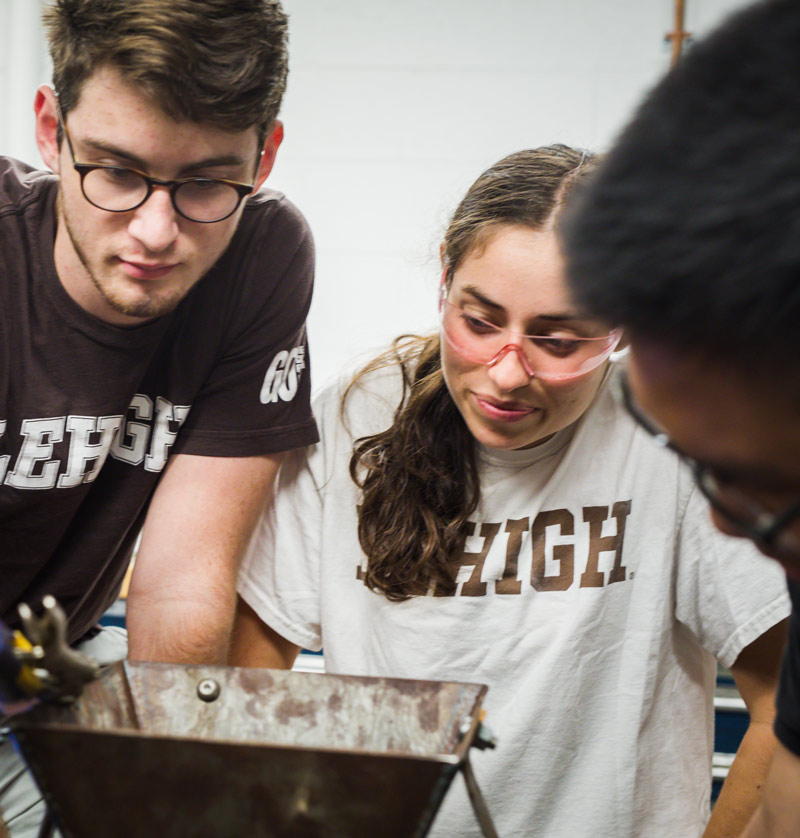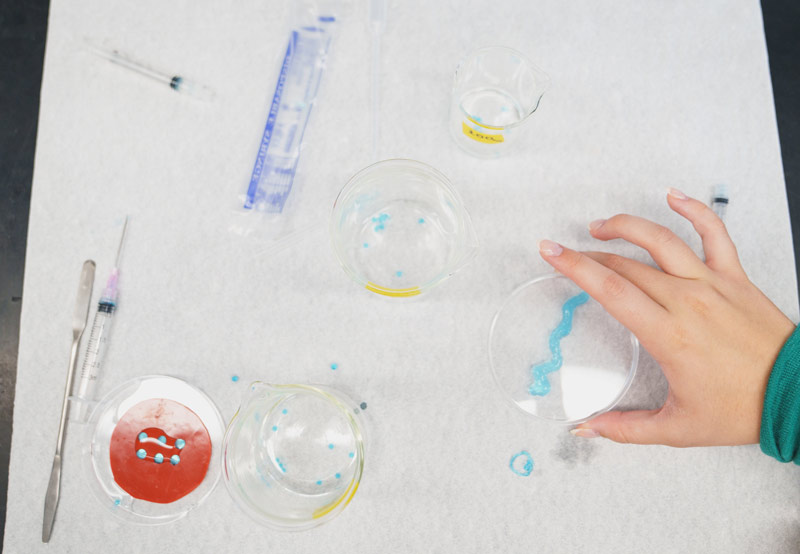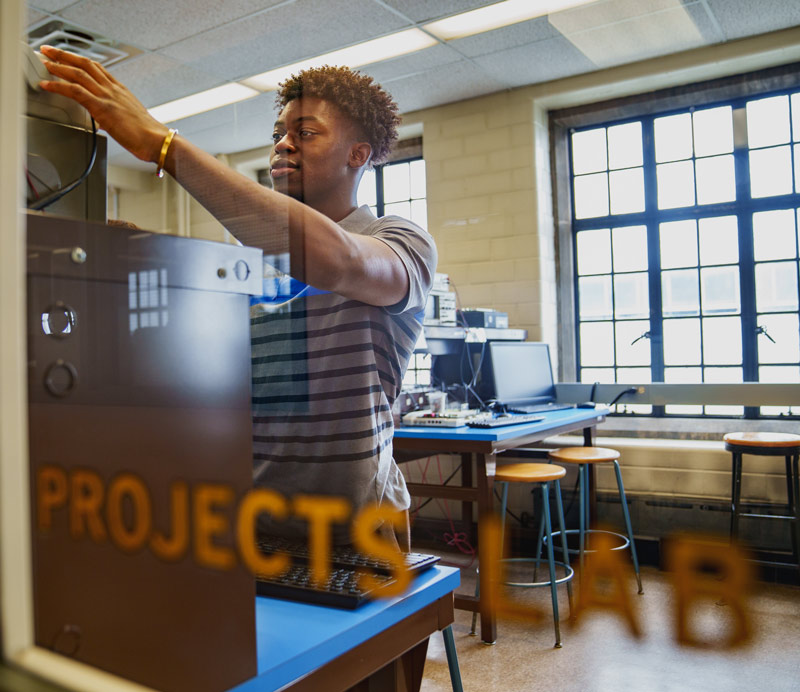Hear why faculty from across the university are energized by the possibilities of Lehigh UDI.
 Generally speaking, universities have long relied on the “sage on a stage” approach to education. Students sit and listen; professors stand and speak. Homework, tests, and grades monitor progress, determine competency, and chart trajectories. It’s a process that can leave some students feeling left out, and left behind.
Generally speaking, universities have long relied on the “sage on a stage” approach to education. Students sit and listen; professors stand and speak. Homework, tests, and grades monitor progress, determine competency, and chart trajectories. It’s a process that can leave some students feeling left out, and left behind.
“The traditional curriculum has assumed a singular, typical user, but we know that ‘average student’ doesn’t exist,” says Bill Gaudelli, Lehigh’s senior vice provost for educational innovation and assessment. “I think we’re losing a lot of talent across higher education by the rigidity in which we’re engaging education. We abide by this one-size-fits-all mentality because it’s efficient, but the reality is that it doesn’t work for many people.”
As part of Lehigh’s strategic plan, Inspiring the Future Makers, Gaudelli is leading a university-wide effort to incorporate User-Designed Inquiry (UDI), an innovative, evidence-based educational approach designed to improve undergraduate student outcomes.
“Lehigh UDI is an attempt to shift the gravity of the work of education away from the faculty and toward the students,” he says. “It takes into account a multiplicity of users with different backgrounds, experiences, interests, values, capacities, and directions, and it invites students to use the things that make them unique to drive their educational journey.”
 In essence, he says, it’s a student-centered approach that gives those students a sense of agency and ownership over what they’re studying, why they’re studying it, and how they’ll ultimately use what they’re learning in the real world.
In essence, he says, it’s a student-centered approach that gives those students a sense of agency and ownership over what they’re studying, why they’re studying it, and how they’ll ultimately use what they’re learning in the real world.
Fully realized, UDI would represent a titanic shift. Hands-on learning experiences, or practica, would integrate the learning of fundamentals into the context of complex engineering problems. Competency-based assessment across a range of knowledge and skill sets would provide a more effective measure of students’ academic progress. Digital portfolios would augment transcripts, allowing students to provide a much richer summary of their college careers.
While the goal is to implement UDI across all five colleges at Lehigh, the Rossin College is already using it as a framework to reenvision the first-year experience of engineering students, while fully maintaining the rigor of the Lehigh engineering curriculum.
A key advantage of the UDI approach, according to Rossin College Dean Steve DeWeerth, is that students would no longer learn subjects in silos. Rather, they would learn fundamental principles of chemistry, physics, calculus, engineering, and computing, while simultaneously understanding how those subjects relate to each other and how they can be applied to real-world engineering problems.
“That integration is key because it gives students a richer, deeper understanding of how problems are actually solved,” says DeWeerth.
So what would UDI look like from the first-year engineering student’s perspective? The vision is just taking shape, but a faculty task force, convened by DeWeerth, is developing the first-year experience around three primary components.
The first is a series of six project-based practica that would take the place of traditional courses. Each five-week practicum would focus on an engineering grand challenge, such as sustainable energy. An interdisciplinary team of faculty members—one that could include professors from outside the Rossin College—would present the problem in all its complexities and guide the students through a multifaceted approach to addressing it. Students would work in small, faculty-directed teams to conduct their own research to enhance both their individual and the group’s understanding of the issue. The development of the practica over the five weeks would culminate in the design of a prototype or the analysis of a complex data set.
 Each of the practicum sessions would require students to develop new knowledge and skills, such as the chemistry behind how drugs can diffuse through a membrane, how to use a 3D printer, how to conduct laboratory experiments, or how to analyze complex data.
Each of the practicum sessions would require students to develop new knowledge and skills, such as the chemistry behind how drugs can diffuse through a membrane, how to use a 3D printer, how to conduct laboratory experiments, or how to analyze complex data.
Mastering these core competencies represents the second component of the team’s vision. Students would develop specific competencies through a combination of independent learning and guidance from faculty members and peer mentors. Competencies would then be assessed on an individual basis. If students fall short, they would receive the assistance they need to ultimately master the skill.
“With the UDI approach, students will also be able to move at their own pace until they learn what they need for each practicum,” says DeWeerth. “For us, assessing students beyond traditional tests and quizzes will be critical, and something that we’ll be learning from Bill and his team.”
Because each of the six practica would tackle an interdisciplinary problem, students would have multiple opportunities to explore specific engineering disciplines.
“Students will learn why certain problems are interesting to chemical engineers or environmental engineers or electrical engineers,” DeWeerth says. “By the end of the year, they’ll have worked on six projects and been exposed to every department in a variety of ways. We expect that they’ll notice a pattern in the ones they’ve particularly enjoyed, and that exposure will help them decide which discipline they want to pursue starting in their second year.”
 The third and final component would be a cocurricular one, in which students pick an experience that spans their entire first year. They might choose, for example, to conduct research in a faculty member’s lab, join one of the college’s competition teams, or take part in a Creative Inquiry project. Students across different projects would then be connected to each other, and these groups would be able to share individual challenges and problems. The goal would be to expose them to the full breadth of perspectives and opportunities across the university.
The third and final component would be a cocurricular one, in which students pick an experience that spans their entire first year. They might choose, for example, to conduct research in a faculty member’s lab, join one of the college’s competition teams, or take part in a Creative Inquiry project. Students across different projects would then be connected to each other, and these groups would be able to share individual challenges and problems. The goal would be to expose them to the full breadth of perspectives and opportunities across the university.
“The hope is that after they’ve completed the six projects and mastered the competencies, that these cocurricular projects will be something they’ll want to continue for the remainder of their undergraduate experience,” says DeWeerth.
And at the end of their first year, students would not have a series of grades, but a set of mastered competencies and a digital portfolio that summarizes their accomplishments.
“When you get to the end of a class,” says Gaudelli, “you should have more to say about it than, ‘I got an A.’ These performance dossiers would clearly outline what a student accomplished, how that product or analysis is used in the real world, and most importantly, why it matters to society. Students will be able to clearly articulate what they learned, and crucially, how it informs where they want to go next.”
Implementing UDI and using it to help transform the first-year engineering curriculum into the first-year engineering experience will be no small task. Because, as Gaudelli says, it’s not a matter of simply tweaking or adjusting a few things.
“It’s a complete revamping of what we’ve traditionally done as an institution, and how we’ve done it,” he says. “It’s the manifestation of pedagogical innovation.”
For DeWeerth, the excitement lies both in the challenge—and in the potential.
“We have the opportunity to build on our rigorous engineering education, rethinking how students learn what it means to be an engineer, and how to help them develop a sense of belonging in the field of engineering, while upholding the rigor of a classic Lehigh education,” he says. “This will be tremendously rewarding work for our students—and for our faculty.”



